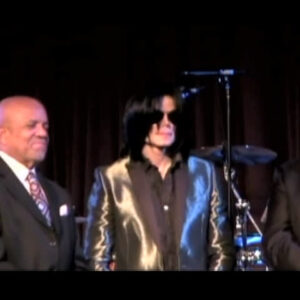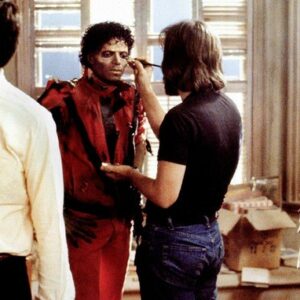Early Life and Career Beginnings
Tina Turner, born Anna Mae Bullock on November 26, 1939, in Nutbush, Tennessee, was far from the glamour of Hollywood or the pulse of New York. Her humble beginnings were marked by a rural upbringing, one where poverty and simplicity went hand in hand. Growing up in a tiny community, she experienced a childhood filled with both joy and hardship. Her parents were sharecroppers, and life was largely centered around church, where gospel music became one of her first loves.
By the age of 10, Turner’s parents separated, and she and her sister were sent to live with their grandmother. Life in Nutbush wasn’t easy, but it was in these early years that she discovered her love for music. As a teenager, she moved to St. Louis, Missouri, to join her mother, and it was here that her life would take a sharp turn towards fame.
In 1957, at the age of 18, Tina’s destiny changed forever when she met Ike Turner, a local musician who was already well-known in St. Louis for his work in the band Kings of Rhythm. Initially, she was a backup singer, but her raw talent couldn’t be hidden for long. Her powerful voice, fierce energy, and magnetism soon thrust her into the spotlight, becoming the lead singer for the group. This transition from small-town girl to frontwoman in a popular St. Louis band was the first step in what would become one of the most iconic careers in music history.
It didn’t take long for the duo to gain traction. Ike recognized Tina’s potential and rebranded her with the stage name that would make her famous: Tina Turner. The pair married, and in 1960, they released their first hit, “A Fool in Love.” This song not only marked their breakthrough but also put Tina Turner on the map as a rising star. Her raspy, soulful voice stood out in an era dominated by male performers and Motown’s polished sounds. Tina Turner was raw, electrifying, and unstoppable.
Challenges and Resilience
While Tina Turner’s career skyrocketed, her personal life became a storm of darkness. Behind the scenes, her marriage to Ike Turner was tumultuous and abusive. Ike was a talented musician and businessman, but he was also deeply troubled, battling drug addiction and violent tendencies. Their marriage, often described as volatile, was marred by physical and emotional abuse that would later become a central part of Tina’s story of resilience.
The 1970s were marked by the increasing strain on their relationship. Ike’s controlling nature and abusive behavior worsened as Tina’s fame grew. Behind her infectious smile and explosive stage presence, she was living through hell. But her professional life didn’t reflect the turmoil at home. Together, Ike and Tina Turner continued to release chart-topping hits like “Proud Mary” and “River Deep – Mountain High,” cementing their place in rock and R&B history. Tina’s stage presence became legendary, with her high-octane performances captivating audiences worldwide.
But as Ike’s behavior became unbearable, Tina finally made the courageous decision to leave. In 1976, after enduring years of abuse, she fled with nothing but the clothes on her back and 36 cents in her pocket. It was a pivotal moment of liberation, but it came with heavy consequences. Ike and Tina Turner were a packaged deal in the music industry, and walking away from Ike meant walking away from her career as well—at least temporarily.
For years, she struggled to rebuild her life. The music industry wasn’t kind to female artists in their late 30s, especially one associated so closely with her male counterpart. But Tina Turner was not the type to give up. She embarked on a solo career, performing in small venues and taking on any gig she could find. During these difficult years, she refined her musical style, blending her soul and R&B roots with a harder-edged rock sound that resonated with audiences on a deeper level.
Her resilience paid off. In 1984, Tina Turner released Private Dancer, the album that would catapult her back into the limelight. Featuring the hit single “What’s Love Got to Do with It,” she defied all odds and re-established herself as a solo artist. Her comeback was nothing short of miraculous. At the age of 44, when many female artists were considering retirement, Tina Turner had reinvented herself. Private Dancer went on to sell over 10 million copies worldwide, proving that Tina Turner’s talent and grit were unmatched.
Genre and Style Contributions
Tina Turner’s musical contributions are immeasurable. Her unique blend of rock, R&B, and soul redefined what it meant to be a female performer in a male-dominated industry. With Ike, her music had been a blend of rhythm and blues with a rock edge, but as a solo artist, she leaned even harder into rock music, while maintaining the soul and gospel influences that had shaped her early years.
Her voice, raw and raspy, was unlike anything else in the industry. It wasn’t polished like many of her contemporaries, but it was powerful, full of emotion, and capable of expressing both pain and triumph. Tina Turner brought an intensity to her performances that few could match. She was not only a singer but a storyteller, pouring every ounce of herself into each performance.
Her stage presence was also groundbreaking. In the 1960s and 1970s, female performers were often expected to be demure or elegant, but Tina Turner shattered that mold. Her performances were full of raw energy, sensuality, and athleticism. She moved like no one else, often dancing and strutting across the stage with boundless energy, her iconic legs becoming a symbol of female power and confidence.
By blending rock with soul and adding her own fierce personality, she became a genre unto herself. Her 1984 hit, “What’s Love Got to Do with It,” was a perfect example of this fusion. It wasn’t purely rock or R&B, but a mixture of both with a pop sensibility. This versatility allowed her to appeal to a wide audience, from rock fans to soul lovers and beyond.
Cultural and Gender Influence
Tina Turner’s impact on culture and gender norms in the music industry cannot be overstated. She was a Black woman breaking into genres traditionally dominated by white male artists, especially rock. In the 1960s and 1970s, when the music industry was heavily segregated both by race and gender, Tina transcended these barriers. Her music was universally loved, and she became a crossover artist, appealing to both Black and white audiences at a time when this was still relatively rare.
In terms of gender, Tina Turner was a trailblazer. In an industry that often dismissed older female artists, she defied ageist stereotypes by having one of the most successful comebacks in music history in her 40s. While many female musicians were written off by this age, Tina showed that talent and perseverance had no expiration date. She continued to perform well into her 60s, proving that women could not only succeed but thrive at any age in the entertainment industry.
Her performances also defied gender norms. She embraced her sexuality on stage without being objectified by it, something that few female artists at the time could achieve. In doing so, she paved the way for future female performers to embrace their power, their bodies, and their femininity without compromise.
Legacy and Influence on Future Artists
Tina Turner’s influence on future generations of artists is undeniable. Her strength, resilience, and talent continue to inspire both male and female performers across genres. She set new standards for what women could achieve in the music industry, proving that they could not only compete with men but outshine them.
Artists like Beyoncé, Rihanna, and Mary J. Blige have cited Tina Turner as a key influence, both for her musical style and for the way she carried herself as an artist. Beyoncé, in particular, has often paid tribute to Turner, famously performing “Proud Mary” with her at the 2008 Grammy Awards in a powerful display of sisterhood and admiration.
Beyond music, Tina Turner became a symbol of survival and empowerment for women everywhere. Her story of overcoming abuse and reclaiming her life resonated with millions. She became an icon not just for her music, but for her strength in the face of adversity.
Her legacy is one of courage, tenacity, and reinvention. Tina Turner didn’t just break into the music industry; she revolutionized it. She redefined what it meant to be a female performer, pushing boundaries in terms of race, age, and gender. Her music, her performances, and her life story will continue to inspire generations to come, cementing her status as the undisputed Queen of Rock ‘n’ Roll.





